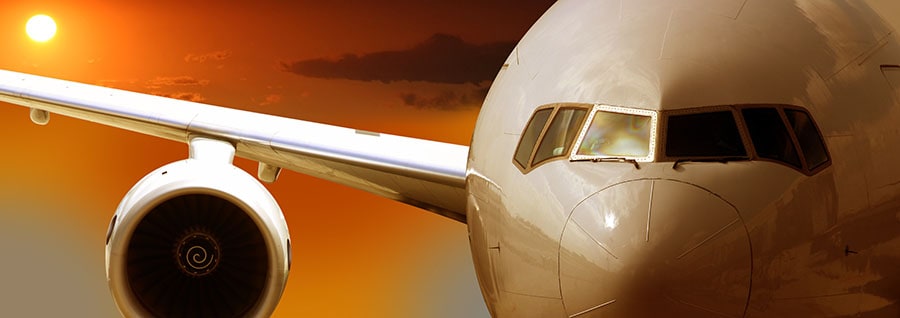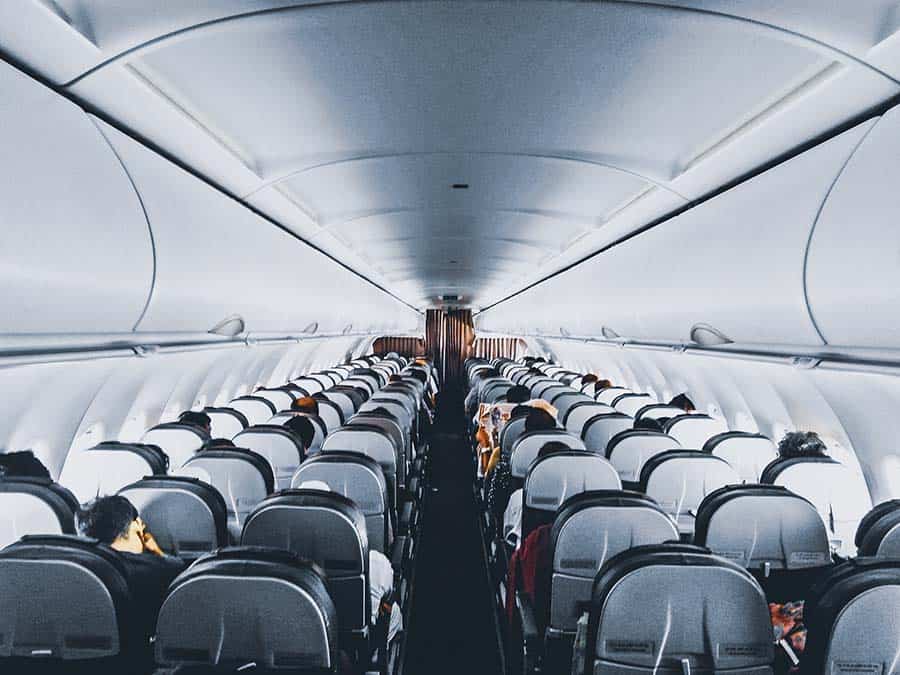
Whether you’re looking to book your first flight or just haven’t traveled in a while, these 7 best tips on booking your airfare and/or tour will ensure that your next journey is uninterrupted. Making mistakes when traveling by plane can be costly, both in terms of time and money.
We’ll cover what to do for your trip a few weeks (or months) before it happens, the booking process, move onto the flight itself, and then post-flight.
Save yourself time and money with these best practices. Good preparation will help take away any “turbulence” or problems you could run into.
1. When is the best time to book your flight?

Price is the biggest factor to consider when timing the actual purchase of your ticket. Price fluctuates quite a bit until the actual flight departs, so there are a few things to keep in mind.
The most important factor, and perhaps obvious, is that you shouldn’t wait until the last minute to book your flight. While “back in the day”, this might have worked, times have changed. Before, keen travelers could go to the airport last minute and buy a standby ticket, with a chance of a reduced price to get on the flight for cheap.
With most flights selling out as well as being booked electronically now, it is a gamble to even consider booking last minute as there may be no flights available. Also, if airlines offered cheaper tickets last minute, everyone would wait until the last minute to book theirs.
The best time to actually book your flight is largely dependent on whether or not it is domestic or international; where you’re going; and when you’re going.
For the US, booking international flights have a greater window which begins sooner than domestic flights. For example, booking for international flights can begin almost 11 months before it departs.
The generally best accepted time for international is booking anywhere from 2-4 months prior. By contrast, domestic flights can hit their lowest price generally around 2 months before departure, with some sooner than that.
With that in mind, it’s also important to consider the other two parts, where you’re going and when. For example, when planning to travel during busy holidays you could give yourself up to 6 months; the same could be said during other popular times, such as spring break to Florida or Europe during the summer.
However if you’re just traveling from New York to Phoenix for a business meetup in the middle of February, 1-2 months should be fine to give yourself a generally good price.
Whether you are booking domestic or international, the next step is to keep in mind what kind of flight you are booking… which leads us to our next important tip:
2. Direct vs. Nonstop Flight: What’s the Difference?

Despite their similarly sounding names, there is an important, distinct difference between these two types of flights. Nonstop flights go directly from point A to point B, as their name implies. For example, booking a flight from New York City to London means you take a single flight which does not stop, and generally speaking, might take 7 to 8 hours on average.
A direct flight from New York City to London might have a stopover, in say Reykjavik, Iceland. This could mean that you stay on your flight unaffected and may just pick up or drop off passengers, or it may be an actual stopover. Even with a stopover (where you switch planes and have a delay before your final flight), it can still be a direct flight since the plane numbers do not change. While direct flights can be more of a hassle than nonstop flights, it may be worth considering them if they are offering a significant discount over their nonstop counterparts.
3. Comparison Shop for the Best Price and Time
If you’re not happy with the time or day flights are being offered by one airline, look around. There are many comparison search sites to use that can bring up multiple airlines all at once – and you can even book right on their website. Some of the most popular ones are Kayak, Expedia, Hotwire, and Orbitz.
Instead of going to each airlines individual website and having to enter your flight information each time, you can go to one of these comparison sites and pull up the available flights from all of the airlines at once – allowing you to see the best time, days, and price from each of the airlines, all next to each other in one neatly made list. As we said above, price can vary a lot weeks or months before a flight, but even time of day can make a difference as to what seats are available.
3. Straighten Out the Paperwork – Ahead of Time

Paperwork – boring! We’ll keep it short and sweet here. There’s two very important considerations to make when purchasing your ticket. First, make sure you buy your ticket with the same exact name as it appears on your ID, whether that’s your passport, license, etc. Small discrepancies can cause big delays or even cause you to miss your flight, so having it down right is important. If it appears on your license as Robert, then make sure to put Robert – Rob will often times not suffice.
If you are traveling internationally, be sure to take note of any documents that are required by your entry country. Some countries simply require a visa, while others will require multiple blank, unstamped pages in your passport book. Make sure that you meet the requirements of wherever you are going otherwise you may risk not being able to depart at all.
With all of this settled – it’s time to pack for your flight.
4. Packing for the Flight! Where to Begin?

So now that you’ve bought the cheapest ticket, figured out what kind of flight you will be taking, and have the ticket all straightened out, it’s important to be ready for the day of. So consider this when packing for your next trip:
Chances are you need less than you think you do. It is ill-advised to pack a bag to capacity, because it can prove to be a problem while on your journey, having to shuffle around everything around, say if you need to access one thing. And it may not be as easy to squeeze everything in the second time after it is dirty than when it was previously clean and folded.
Be aware of weight limitations. Most airlines will require carry ons and luggage to meet maximum weight requirements or you else you may face large fees.
Stay organized and keep a checklist, mental or physical, of everything you pack so that you know what you brought and what you didn’t. This helps incase you arrive at your destination and think you may have misplaced something a day or two later, when in reality, you may have just left it at home.
With your bags packed and paperwork settled, the day of the flight will be coming in no time so let’s take a look at some day-of tips to make sure that goes as smoothly as possible
5. The Big Day – Boarding Your Flight
We will see some small differences here again between domestic and international flights. Generally speaking, the minimum amount of time you want to give yourself is at least 1 hour for domestic flights and at least 2 hours for international flights.
Some airline carriers recommend more, and to be on the safe side, you should aim for 2 hours for domestic flights and 3 hours for international flights. There’s a few reasons to plan on arriving earlier rather than later.
If you don’t travel often, using an unfamiliar airport, or are even flying for the first time, then arriving early will help you put your mind at ease as you become familiar with the process and layout. Some airports can be quite intricate and complex, so it is best to know exactly where you need to be ahead of time so that you can plan accordingly. After all, you may want to grab some food or water before your flight.
Besides becoming comfortable with the airport, the most important reason to arrive early is to make sure you make your flight! Consider giving yourself more time both on the road and in the airport during busy weekends or holidays.
Overall, airports can be pretty monotonous so it is best to find a sweet spot for how much time you need. If you are only bringing a carry on and have already checked-in online during a slow week day, you can afford arriving a little later than someone with luggage who is traveling during a weekend or holiday.
6. How to Prepare for the Flight Itself

First and foremost, it’s always good to be well hydrated and fed before heading into a flight. You never know when there could be delays or how long it could be until the flight serves food and water.
Some flights resort to using tap water opposed to bottled, so it’s something to consider before you board.
You can usually bring in an empty bottle through airport security and fill it up while in concourse, and some people choose to freeze their drinks beforehand since frozen drinks are typically allowed through security; although there are regulations on that as well so be sure to look them up as its always changing.
When you first board your flight and find your seat, it’s important to put your luggage in the overhead bin corresponding with your seat. This not only makes it easier for you to find it when the plane lands, but also is considerate of other passengers, in that you aren’t taking their space.
After that, the airline will go into the standard procedure of instructions, where they will talking about certain guidelines over the intercom while flight attendants demonstrate what to do in certain scenarios.
Depending on the length of the flight, you may look into a number of things to benefit the ride itself. Having reading material is always a safe bet, whether it’s a book, e-book, magazine, etc.
Some airlines have built in videos on the back of the seat so you can take advantage of watching a movie or show if you happen to bring some headphones with you. For longer flights, you could consider a sleep mask to help you catch up if you expect jet lag, which occurs when your sleep schedule becomes offset as a result of flying through a few time zones.
During the flight itself, the most common problem experienced (besides a few minor jolts and shocks from the occasional turbulence) is ear barotrauma.
To put it simply, the rapid change in air pressure can lead to feelings of discomfort and pain while the plain is ascending or descending. There are a few tricks to overcome this however.
Consider holding your nose and gently blowing, which can help relieve the pressure. Be careful not to go overboard with this as there can be more serious problems that result like rupturing your eardrum. You could also try moving your mouth muscles or taking a decongestant.
Now that you’re ready for your flight, let’s remember a few travel basics that everyone can benefit from, even if you’re not flying.
7. Back to the Basics – Useful Info for Any Traveler
While we’ve mostly been focused on plane travel up to this point, we’re going to touch on important things to do whether you’re traveling by plane or just taking a 1,000 mile road trip.
The most important thing to do is to make sure you have multiple ways to access your money. Start off by letting your credit card organization and/or bank know that the dates you will be traveling as well as your destination.
This is especially important if you plan to go international, but some banks will flag your card even if it’s being used in another state (which can be a good thing, consider it that your bank is looking after your financial well being). There’s nothing worse than arriving at the hotel and trying to put down your card only to find out it is being declined, and then having to go through an hour long fiasco with your bank to try to straighten it out.
With everything taken care of ahead of time, it will cut less into your more important travel time. When you have a debit card, credit card, and cash, along with notifying each institution ahead of time, you will be more likely to have a worry-free traveling trip.
For those that are traveling internationally, it’s always a good idea to notify the embassy of your country that you will be abroad. For example, in the US, there is the Smart Traveler Enrollment Program (STEP), which is always beneficial to enroll in for international travelers.
With STEP, you can receive notifications about the safety and security of your destination country, allow the US embassy to contact you incase of an emergency (such as inclement weather, civil unrest, or a terrorist attack), and can help your family get in touch with you incase of any of the above. If for nothing else, it’s always good to have as an option and to stay informed.
And finally, be sure to do your research on your destination you will be visiting. This entails two major parts: traveling once you are there, as well as language and culture. It’s always good to know the transportation system or figure out car rentals ahead of time in order to avoid unexpected expenses. It can also save you money. There is nothing quite like heading into a crowded car rental station in a hurry and having to head to the one with the shortest line or being forced to wait longer; in addition, you won’t even know the competing prices of each of them.
Try to have your car rental booked ahead of time or at the very least, do your research on the competing prices and make sure you can get the same price in-person as you can get online. If you plan to travel by bus, have the bus schedule downloaded on your phone or printed out. And lastly, if you plan to use a ride-sharing app like Uber, make sure you understand the rules regarding pick up and drop off around airports.
Many airports are now restricting ride-sharing access because it can create a strain on traffic, security, and it competes with the local taxis. Whatever your preferred method of transportation once you land down in your new spot, do your research ahead of time to come out on top.
We hope that these 7 tips will help simplify your next travel trip. Booking at the right time, comparison shopping, understanding flight terminology, being familiar with flight procedures and boarding, taking care of paperwork, packing properly, and being informed about your destination are all ways in which you will save yourself time and money next time you fly.

